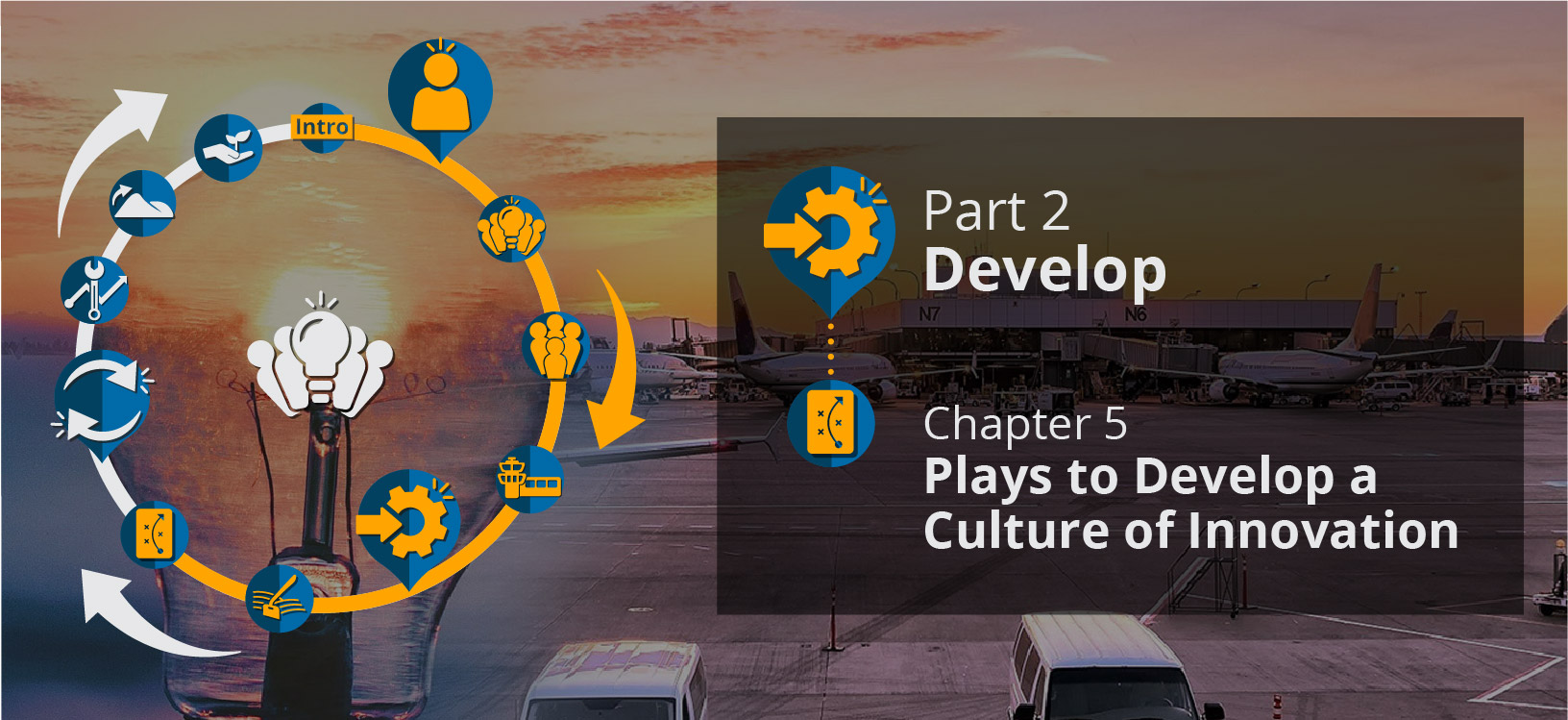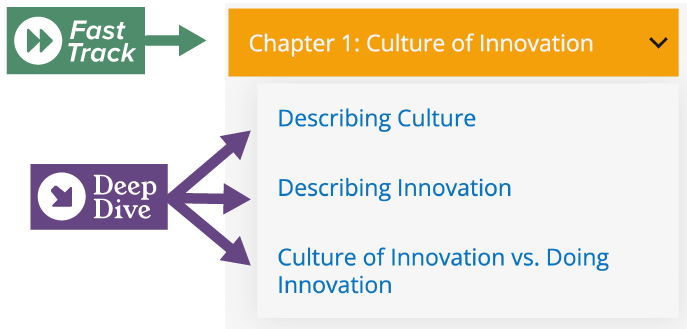

This is a Deep Dive page. Select the chapter for the Fast Track
Leadership: Becoming an Innovative Leader
Leadership plays an essential—if not the most critical—role in driving innovation at an airport. Research has shown that a leader at the highest level (think CEO or C-suite) is typically the main catalyst for initiating an airport’s move toward a culture of innovation.
A recent example is that of the Dallas Mavericks basketball franchise, whose new leader, Cynthia Marshall, completely transformed the culture. The Mavericks had been mired in a toxic culture, where diverse voices were not being heard, for many years. Marshall took the job to transform the organization into an inclusive, diverse, and MAD (make a difference) innovative culture. As the National Basketball Association’s first Black female CEO, Marshall has been an effective change agent, and the Mavericks now have a “speak-up” culture where everyone in the organization is encouraged to share their voices as a means of continual improvement. She took up this mantra to such an extent that she met personally with every person in the organization to get each and every perspective.1
Marshall exemplifies the type of leader needed for innovative culture change. This type of leader directly impacts the development of an airport’s values and strategies, which instructs the way staff and partners interact with one another in daily work. Therefore, it is important to start here and explore how an executive leader is needed to initiate an airport’s move toward innovation. These leaders provide the push needed to propel innovation.
Some of the world’s most innovative leaders believe that innovation needs to be both a personal priority and an organization-wide focus. Innovative leaders need to be passionate about what they do and what they want to achieve if they want to inspire and be a role model for others. As film director George Lucas said, “You have to find something that you love enough to be able to take risks.”2 In addition, leaders need to infuse this passion into the organization itself. This is needed to make the organization a place where employees are willing to take risks to reach their goals and spend time motivating and encouraging others around them to take risks as well. Innovative leaders help staff develop the positive personas identified in Chapter 2 (catalyst, sustainer, accelerator, enabler, and challenger).
Innovative leaders do not work alone. While their individual styles may vary, they typically collaborate by inviting others in to help them solve problems. They are not afraid of pushback on ideas and often use a “no” to prompt discovery of new solutions. Innovative leaders live out the values they support, which are ultimately focused on improving the way things are done for their customers. Whether these values are experimenting, being open to change, or supporting others, innovative leaders are consistent with what they do and say so that they can be seen as accountable and trusted. This makes their employees feel safe to try new things, too.
Check Out Plays 1-5


1 Mary Pilon, "The Dallas Mavericks' New CEO Is Cleaning Up a #MeToo Mess: When Mark Cuban Needed Help, He Turned to Cynthia Marshall," Bloomberg Businessweek, December 20, 2018, https://www.bloomberg.com/news/features/2018-12-20/the-dallas-mavericks-new-ceo-is-cleaning-up-a-metoo-mess.
2 Geoff Lo, "The Top 20 George Lucas Quotes," Culture Slate, August 11, 2022, https://www.cultureslate.com/news/the-top-20-george-lucas-quotes.

